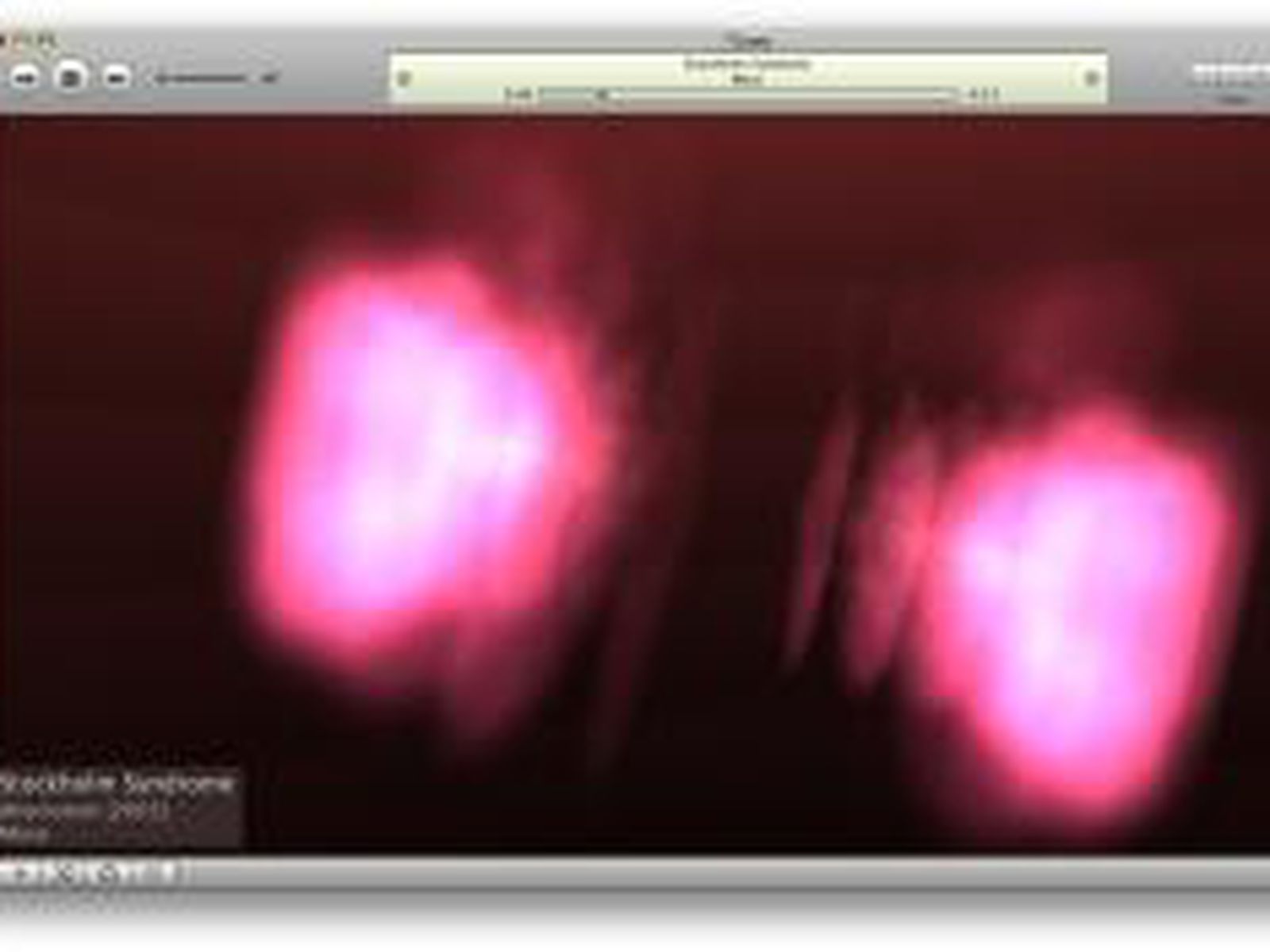Home > Articles > Apple > iPod
I just did an OS update in my mid 2010 iMac and have noticed that my preferred iTunes visualizer has disappeared as an option for me. Not only that, but the other other two fuzzy looking. I don't think that's how they looked before. After doing some research I found out the name of the visualizer I had been used to looking at- it's named Jelly.
- Feb 07, 2014.
- Among the many new Leopard features are three new iTunes visualizers—Lathe, Jelly, and Stix (choose View - Visualizer to select a visualizer, then press Command-T to activate the visualizer).
- Kauna is a music visualizer. Kauna renders any sound reproduction in system. It can also capture audio from a microphone. There are different dynamic and beautiful visualizations available: Wave - frequencies as fine lines; Confetti - colored discs, changing its size; Bars - rainbow spectrum analyzer; Burning clouds - bright visualization simulates illuminated clouds; Plasma - old school.
- These are installed with developer tools. If you don’t want to install the developer tools you can download the package here. One ofthe visualizations that out ranks the built in to iTunes is Jelly, as shown in the screenshot below it is a high energy composition that moves in tune with the music, it is great, really colourful and fun to view.
- Download and install the best free apps for iTunes Visualizers on Windows, Mac, iOS, and Android from CNET Download.com, your trusted source for the top software picks.
- The iTunes Interface
This chapter is from the book
This chapter is from the book
Itunes Visualizer Jelly Download Mac 10.10
iTunes is your one-stop digital media hub. With iTunes you can import music, organize it, play it, and share it with others. You can also use iTunes to watch movies, music videos, and TV shows. If you own an Apple device such as an iPhone, iPod, or Apple TV, you can use iTunes to download critical software updates to your device and sync it with your Mac.
Itunes Visualizer Plugin
Create your own playlists that contain the songs and videos you want, in the order you want. Then burn a CD of your favorite collections to take with you. Create Smart Playlists that automatically organize songs and videos into collections based on conditions that you set. If you want to play songs randomly, use iTunes’ “Party Shuffle” feature to shuffle songs around in a playlist.
The online iTunes Store provides a place to preview and purchase music, music videos, movies, and TV shows. Thirty-second previews of more than a million songs are available, including thousands of exclusive prerelease tracks and many rare, out-of-date albums. You can also search for and download podcasts—free audio and video shows produced by amateurs and professionals alike.
iTunes is closely integrated with the other iLife applications—iPhoto, iMovie, iDVD, iWeb, and GarageBand—making it easy to add music to slideshows, movies, DVDs, websites, podcasts, and to your own music arrangements.
The iTunes Interface
A quick overview of the iTunes interface is shown here and on the next page. Most of the controls you need are located directly on the iTunes interface. Almost every control is explained in detail elsewhere in this chapter.
In the example below, the Music library is selected in the Source list (the section on the left side of the window), and the Music library’s contents are shown in the Detail window (the large pane to the right of the Source list). When you select an item in the Source list, its contents appear in the Detail window on the right.
In the example below, a playlist is selected in the Source list. For each item in the Source list, you can customize the Detail window view to show the columns of information you want. See “View Options” on page 229.
Related Resources
- Book $31.99

- eBook (Watermarked) $25.59
Itunes Visualizer Apple Tv
- Book $47.99